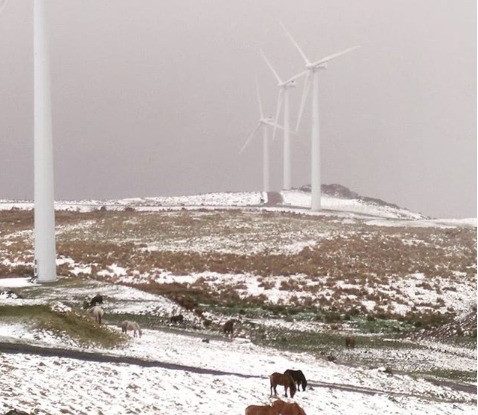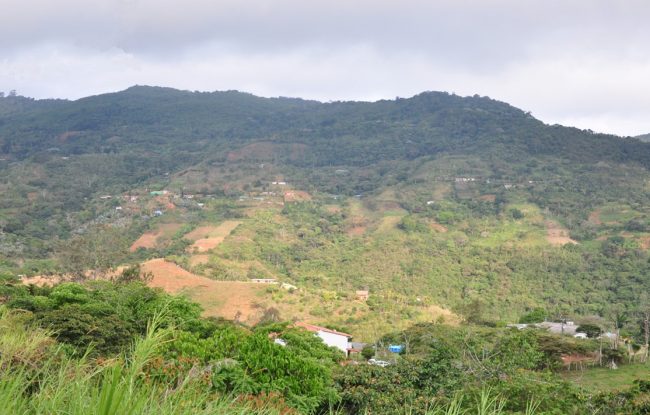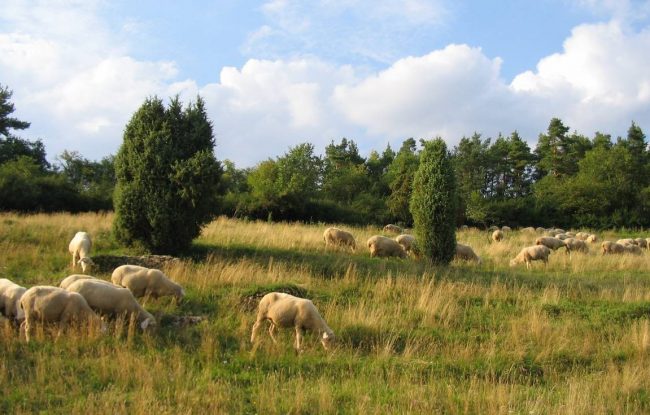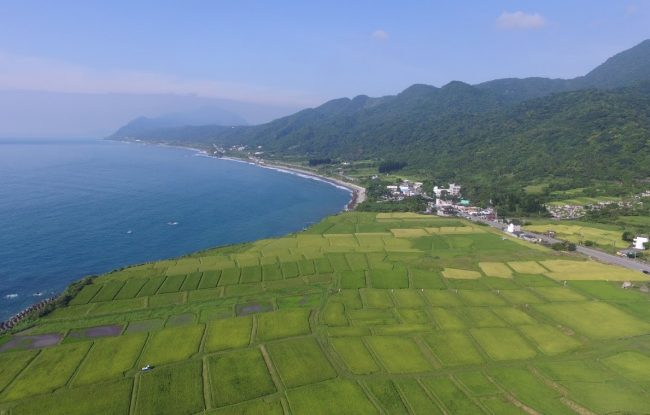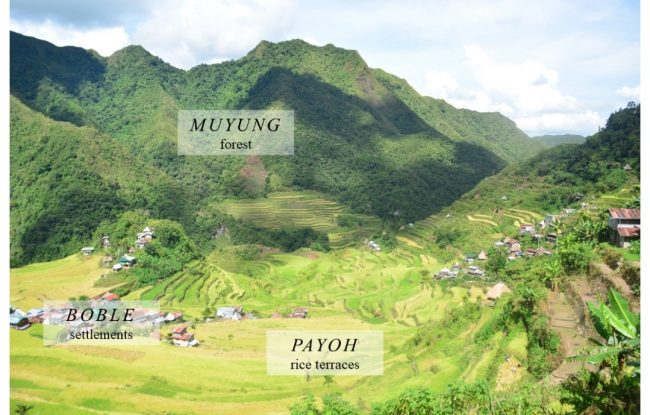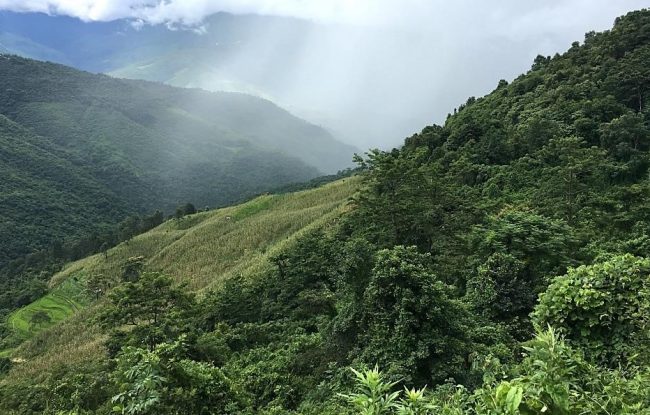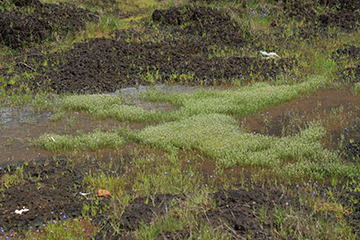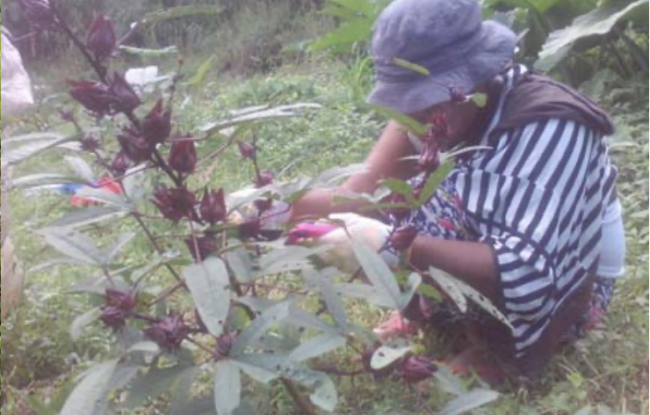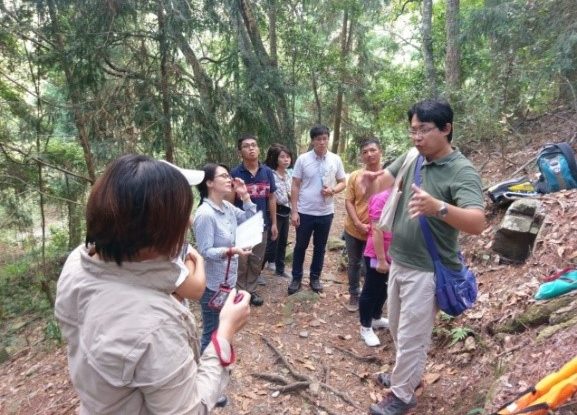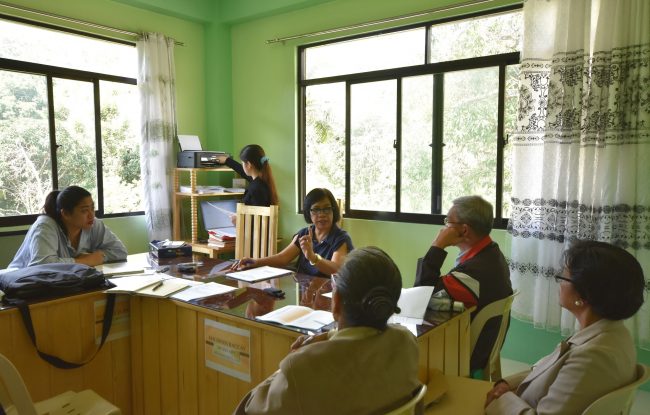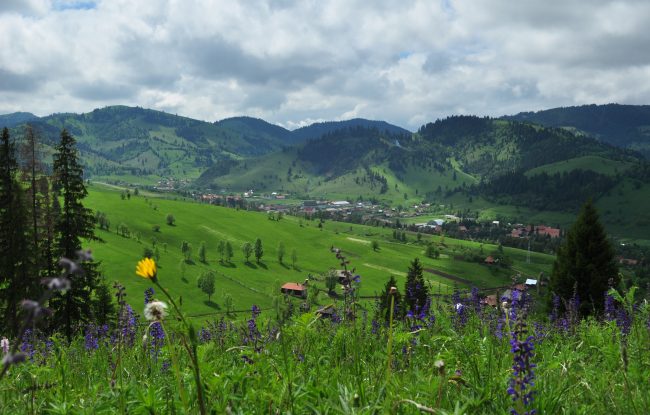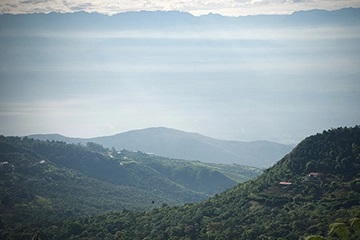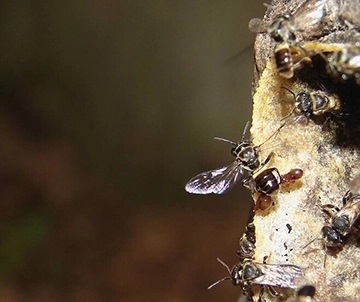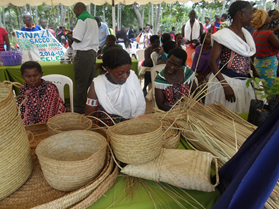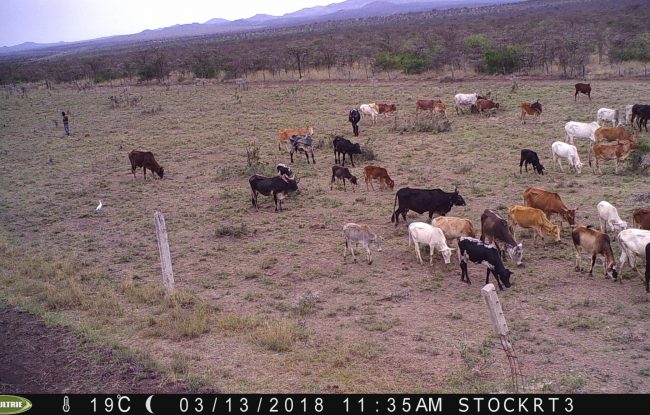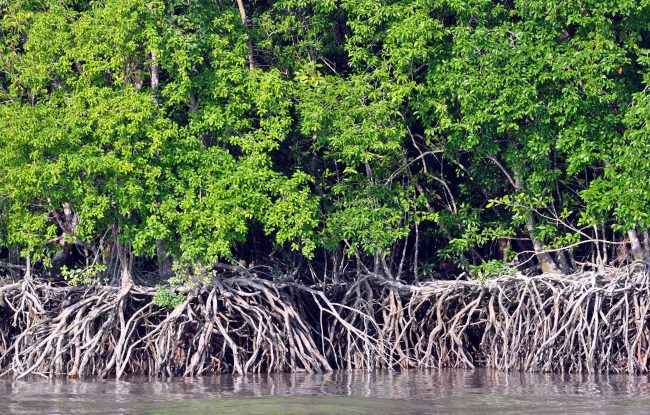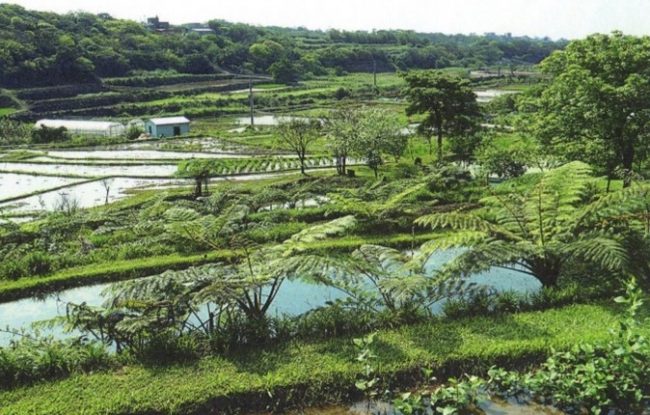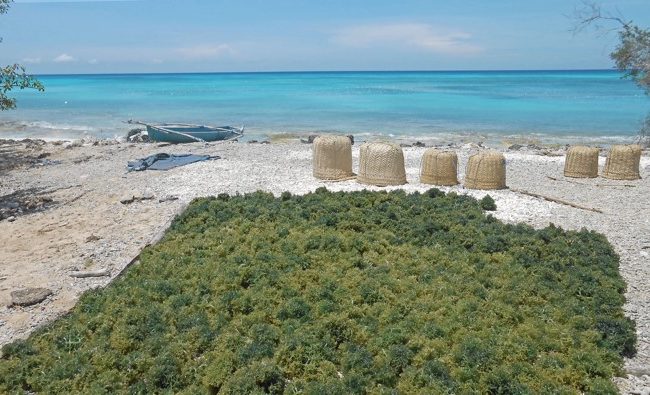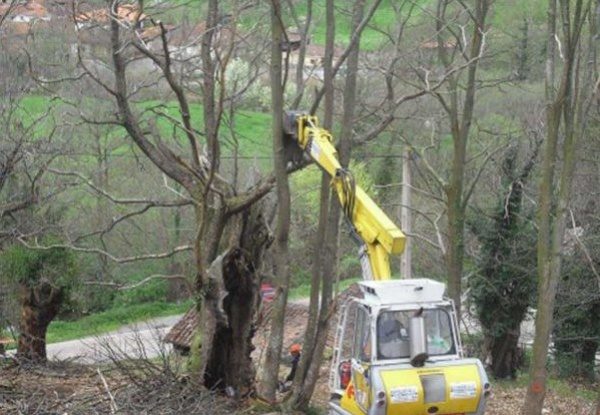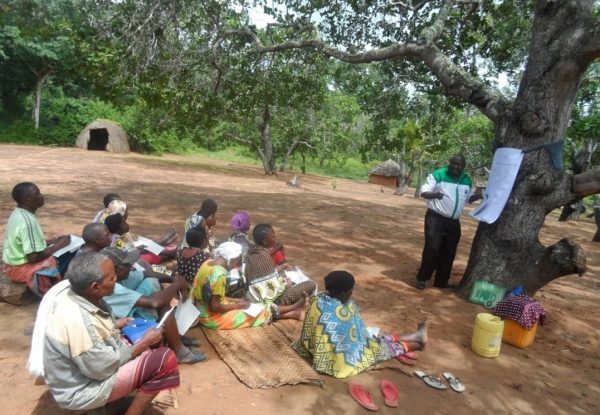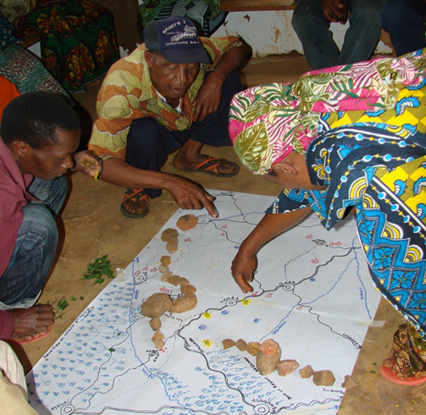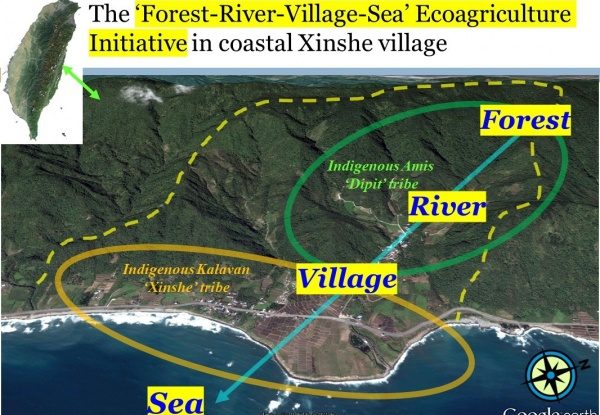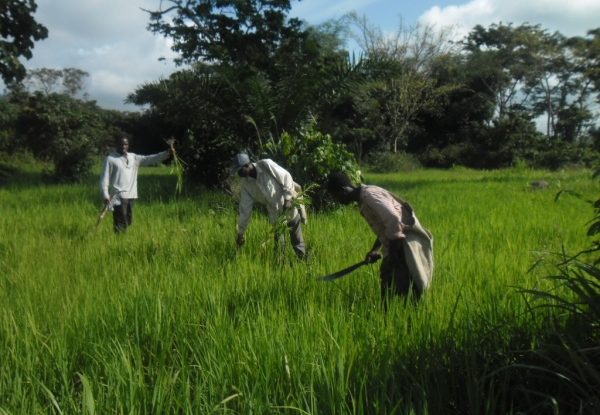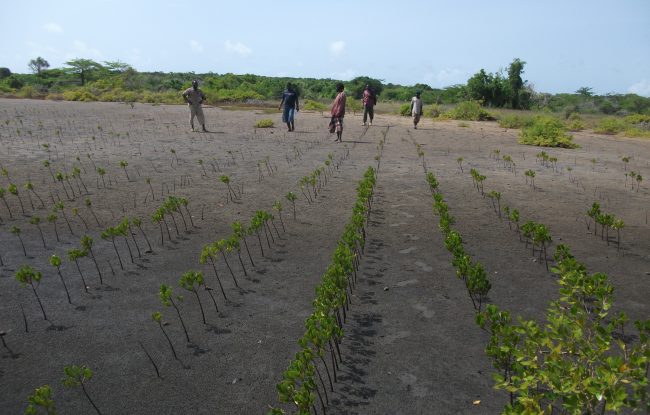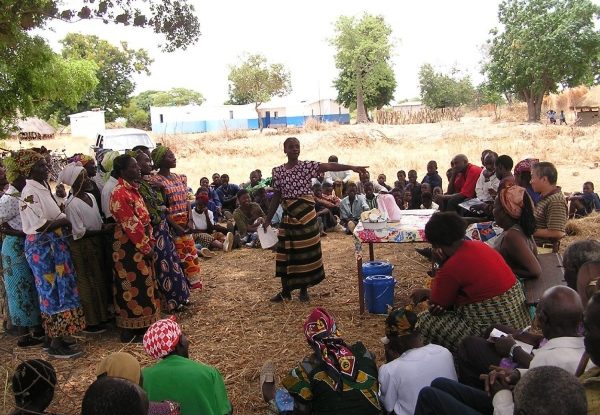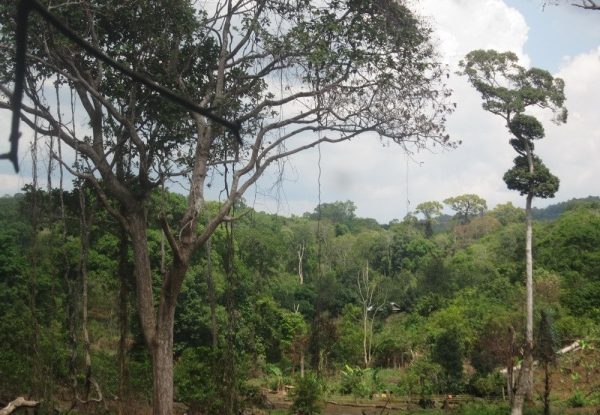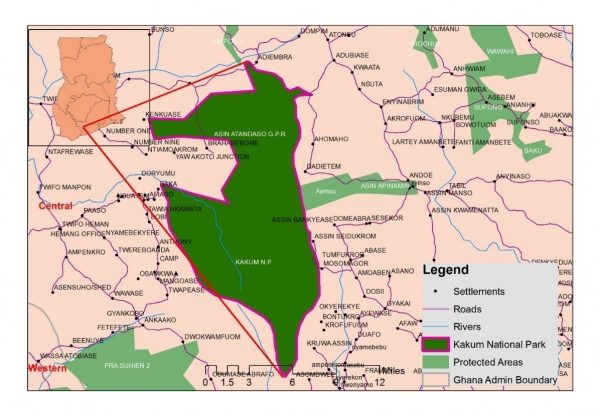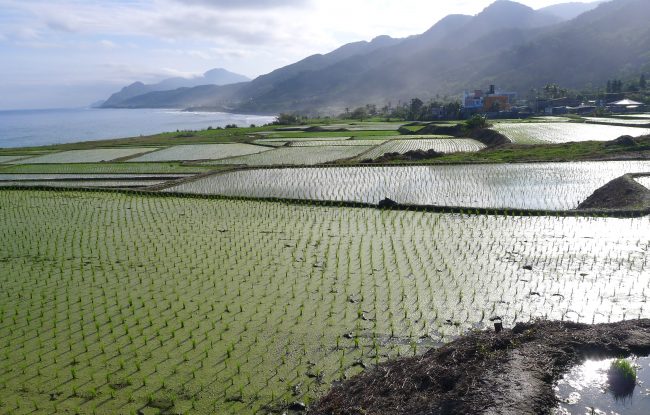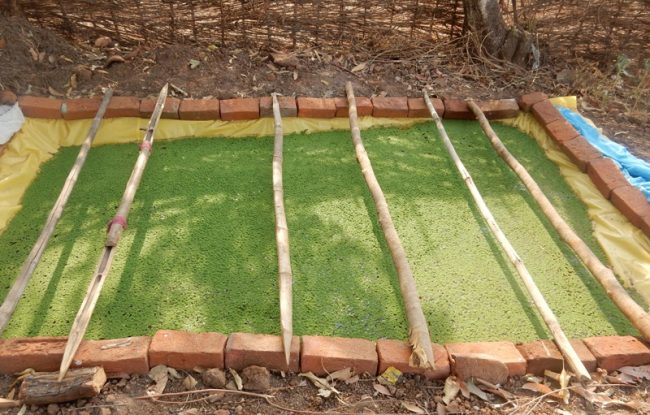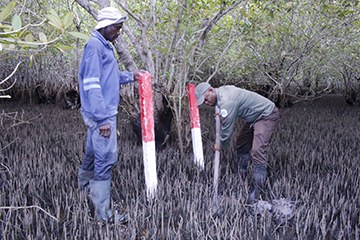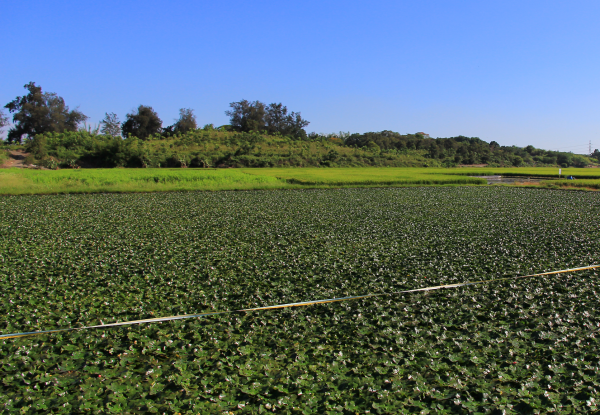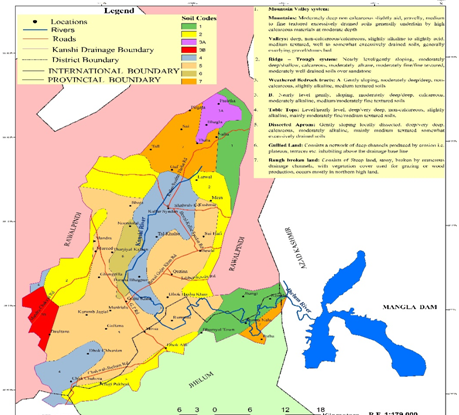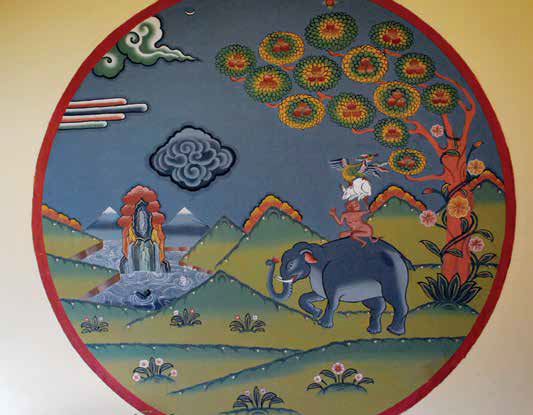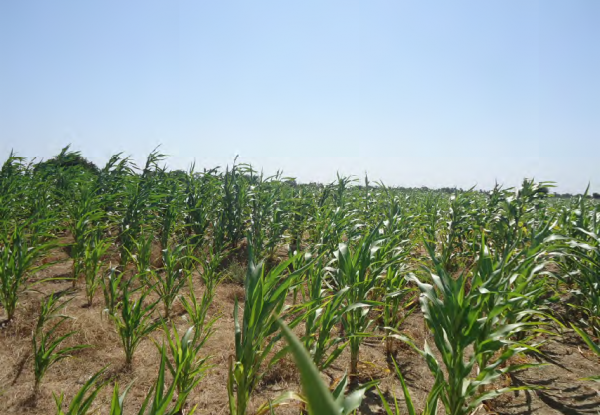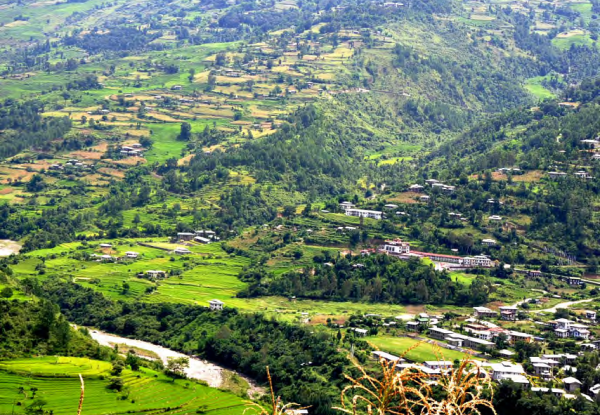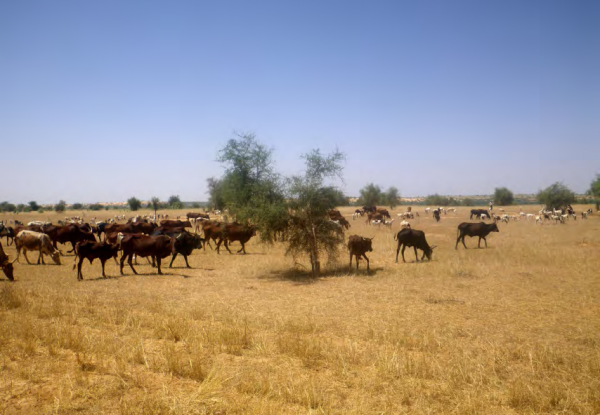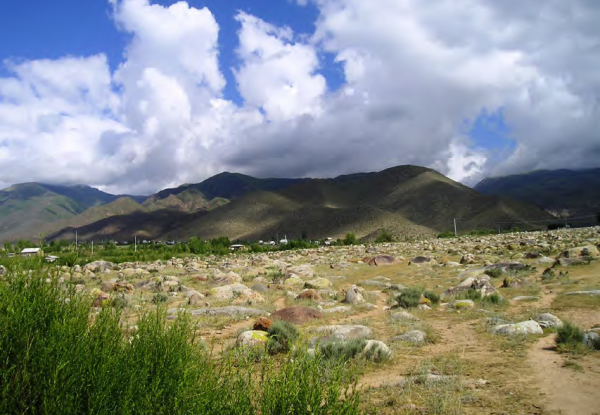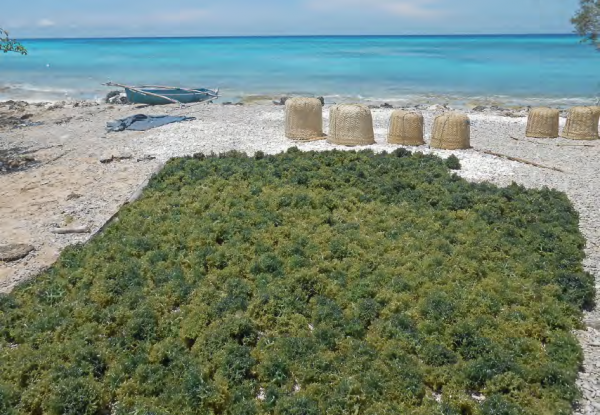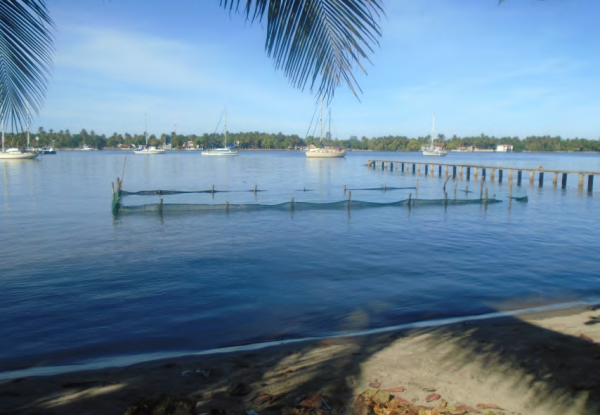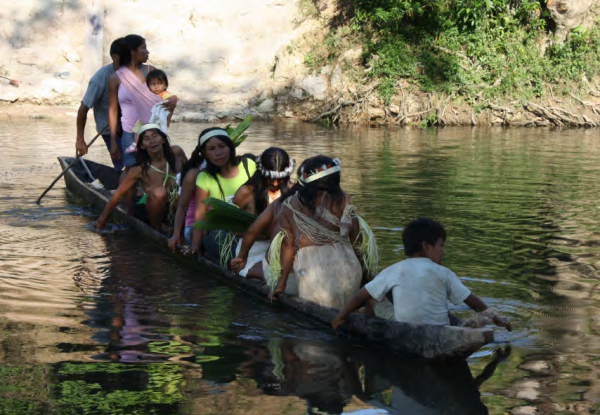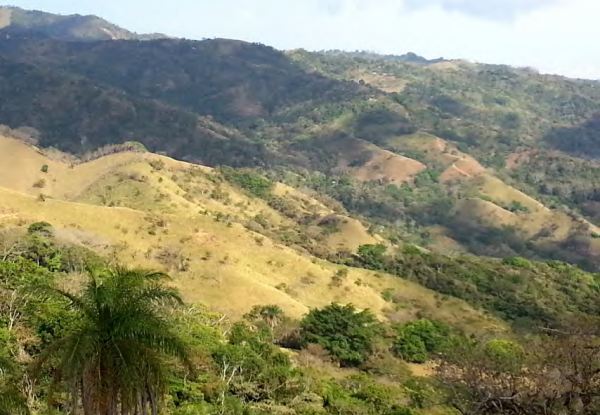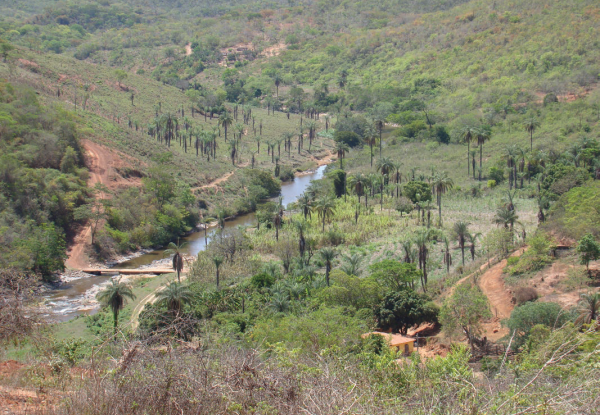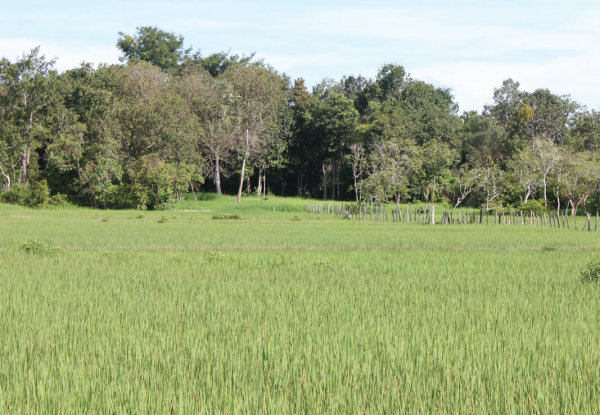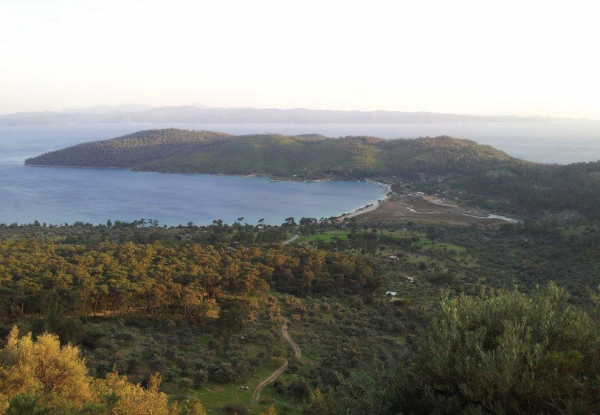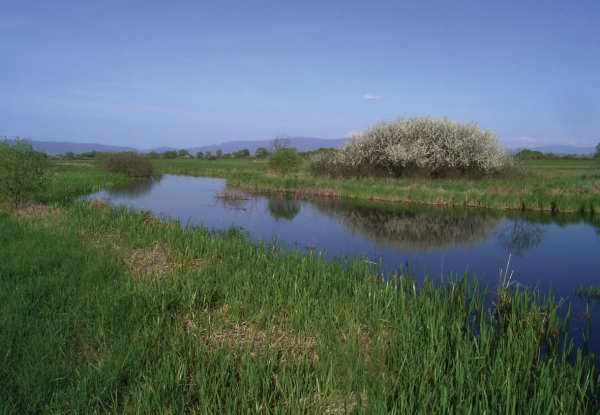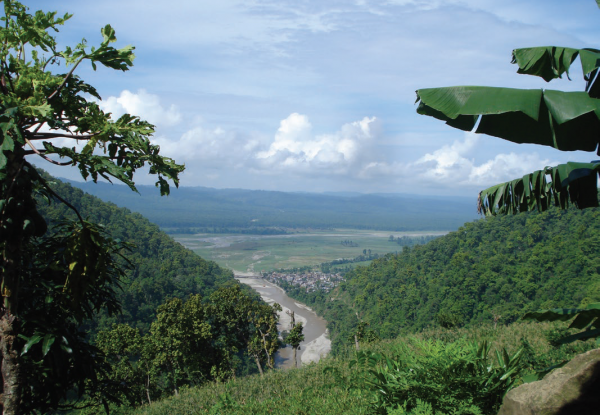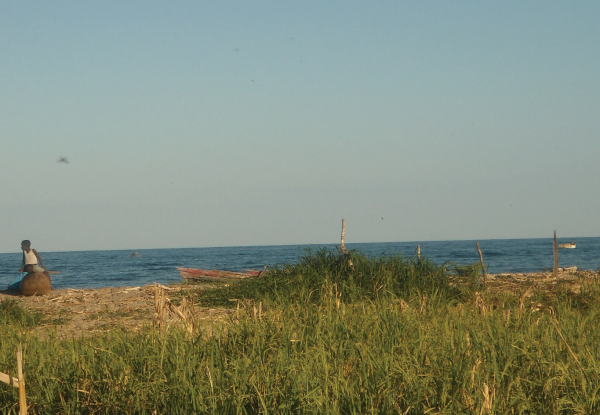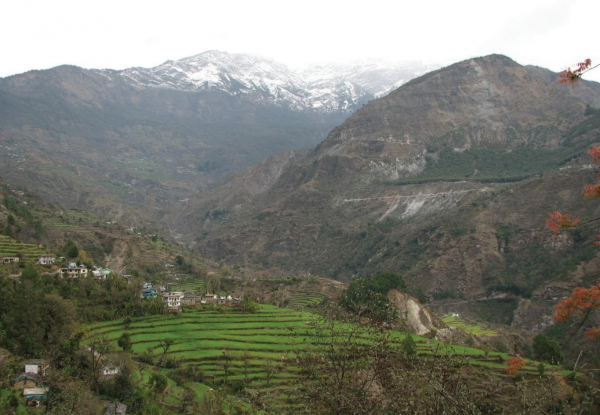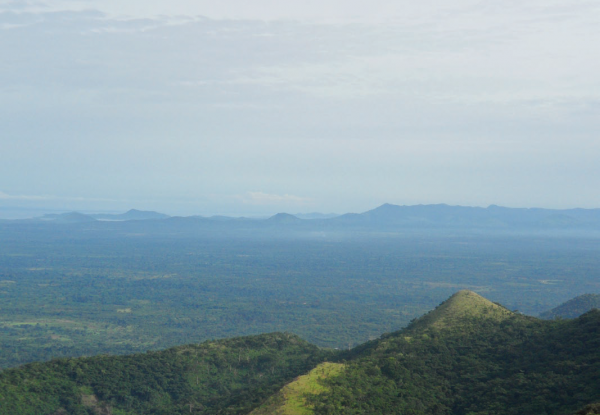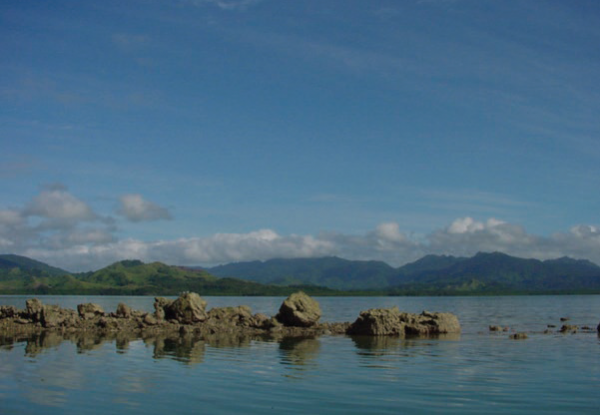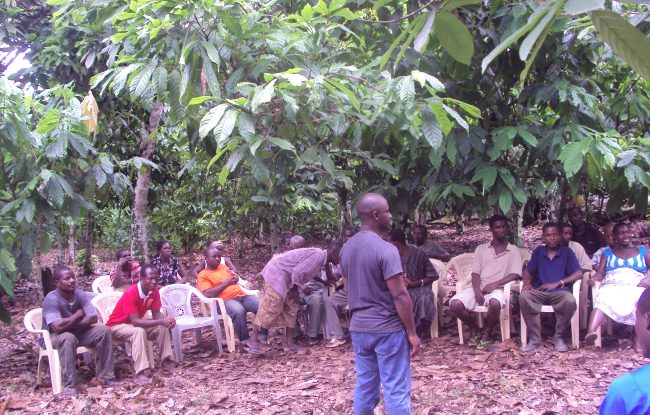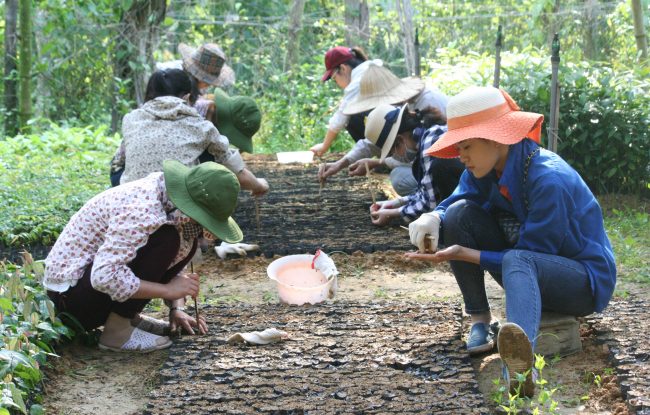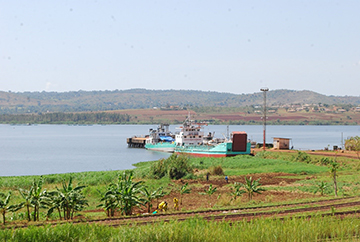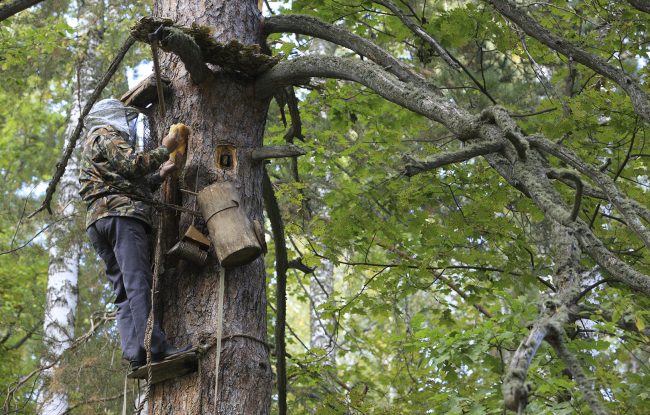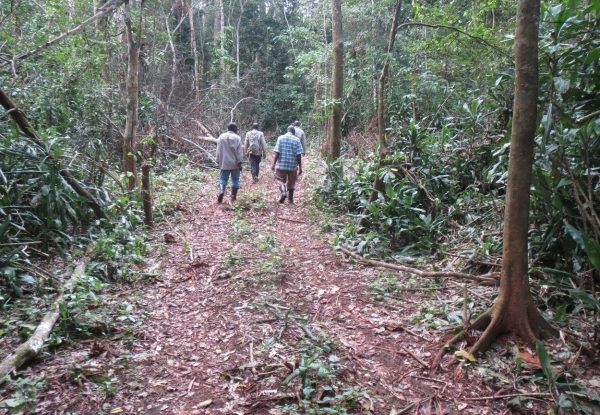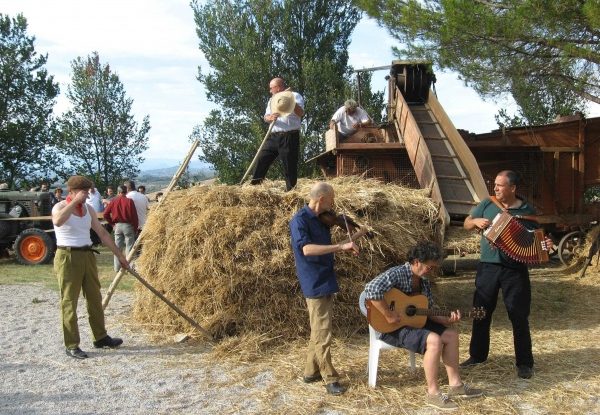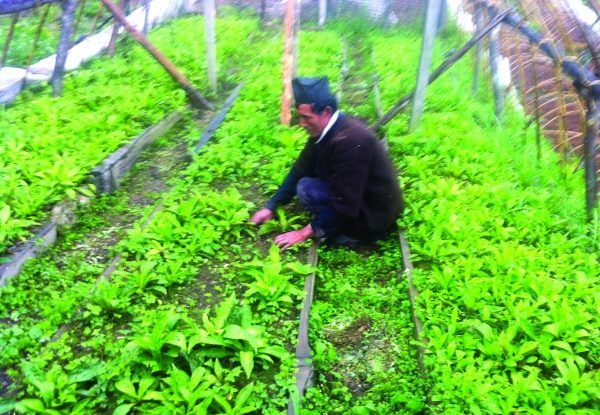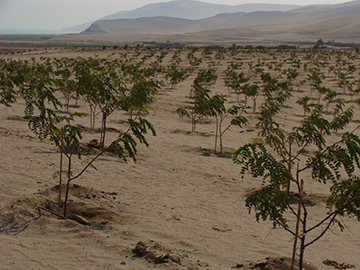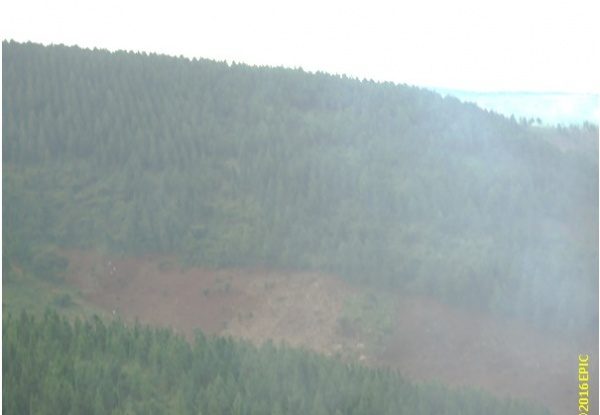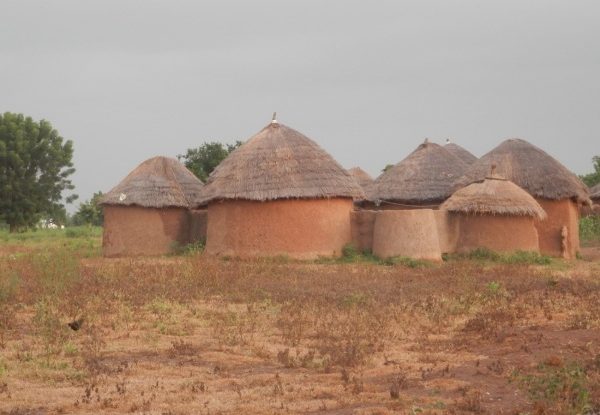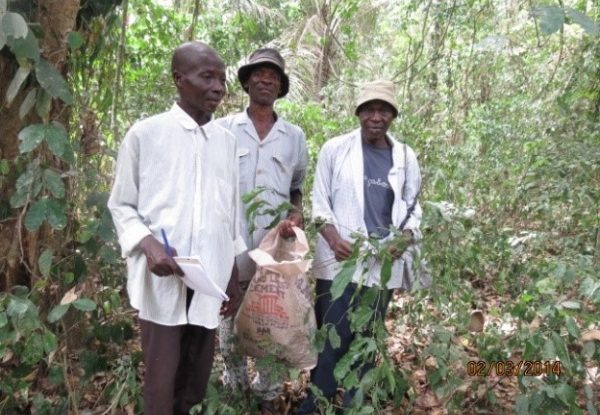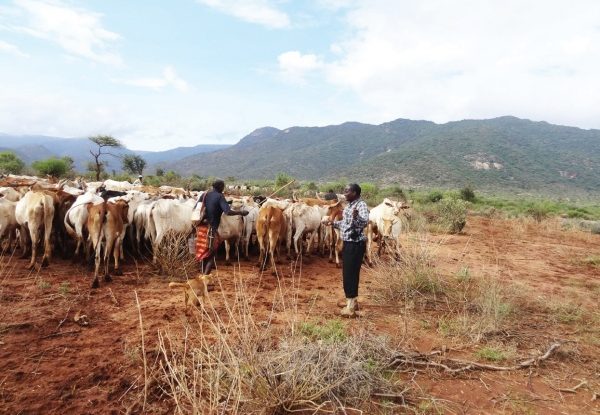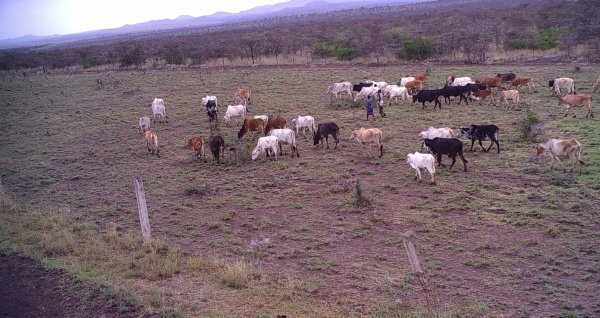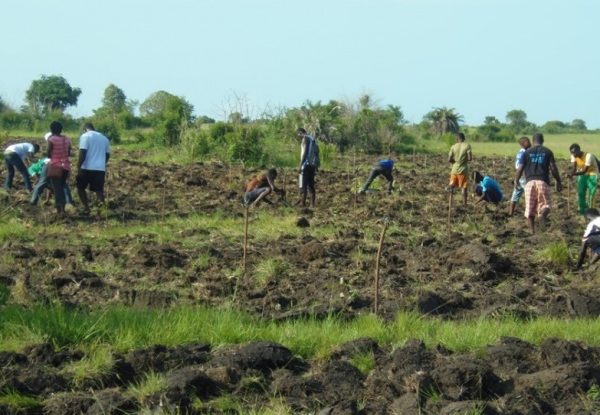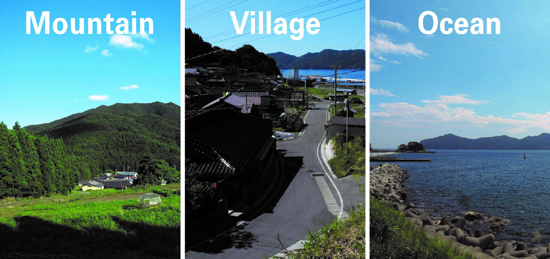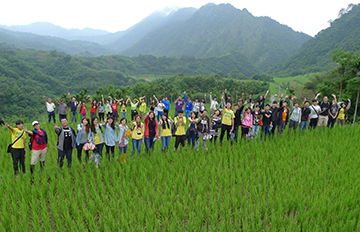


 Australia
Australia Austria
Austria Brazil
Brazil China
China Cuba
Cuba Fiji
Fiji Germany
Germany Ghana
Ghana India
India Indonesia
Indonesia Iran
Iran Italy
Italy Japan
Japan Kenya
Kenya Nepal
Nepal Nigeria
Nigeria Philippines
Philippines Romania
Romania Saudi Arabia
Saudi Arabia Slovakia
Slovakia South Korea
South Korea Sri Lanka
Sri Lanka Syria
Syria Taiwan
Taiwan United States
United States Vietnam
Vietnam

Loading
Serra do Xistral is a medium-range (maximum height: 1,052 m) mountainous area in the North of the Autonomous Community of Galicia (Spain). Its Atlantic oceanic climate, characterized by abundant precipitation, winds, and fogs, facilitated the formation of a landscape characterized by extensive wet heathland and bog habitats. These are considered the most valuable ensemble of bog and wet heathlands for biodiversity conservation in all the Iberian northwest, and include blanket bogs unparalleled i…
We describe the qualities of a cultural landscape kept within modernity by the local people of the Utawallu valley in Imbabura province of Northern Ecuador. Conservation efforts to incorporate cultural diversity alongside the biological diversity of the significant protected area in Western Ecuador are needed in order to improve protection of the traditional ancestral farmscape of the Imbakucha Basin. The different characteristics of the socio-ecological production landscape present in the site …
The San Antonio Forest (SAF) is a key biodiversity area (KBA) located in Valle del Cauca in the Colombian Andes, and one of the regions most threatened by human intervention, with less than 30 percent of its natural ecosystems conserved. This productive and biodiverse landscape is a dynamic mosaic of ecosystems and land uses, including villages, crops, forests, pastures and private properties containing luxury country houses and small farms. It is considered as a SEPLS for the reason that it gen…
The case study analyzes the collaborative planning and management processes of the ‘Forest-River-Village-Sea (森-川-里-海) Ecoagriculture Initiative’ from 2016 to 2017 in Xinshe Village, Hualien County, Taiwan. Two indigenous ethnic groups – the Kavalan Xinshe tribe and the Amis Dipit tribe – and their farmlands are located in the same watershed between the national forests of the Coastal Mountain Range and the Pacific Ocean. Resource conflicts over water usage, hunting and fishing rights have happe…
The Ifugao Rice Terraces (IRT) in the Philippines was inscribed as a World Heritage Site in 1995 by the United Nations Educational, Scientific and Cultural Organization. In 2005, the Food and Agriculture Organization also inscribed it as a Globally Important Agricultural Heritage Systems site, the first in the Philippines. Despite these recognitions, the IRT faces various challenges such as under-management of biocultural diversity and socio-ecological systems, poor maintenance, abandonment of r…
In Nagaland, located within the Indo-Burma and Himalaya biodiversity hotspots in India, customary rights are protected by the Indian Constitution, and the majority of natural habitats (88.3%) are owned and managed by individuals and clans overseen by village councils, district councils and other traditional institutions. However, in the absence of alternative livelihood options, most of the economic activities in the villages are based upon utilization of natural resources. This has led to over …
This project comes up with a research case study from the Western Ghats on the problems and ‘prospects’ of converting Laterite Hills, a Socially and Ecologically Productive Landscape (SEPLS) for alternate benefits. These hills are the source of water and nutrients for the valleys where people live densely and do farming extensively. The rich biodiversity in the hilltops supports endemic and unique flora across seasons. This case reveals that the Laterite Hills are the most imposing but extremely…
This project demonstrated the effectiveness of ecological agriculture and sustainable land management to improve the livelihoods of indigenous small-scale farmers and protect local ecosystems in the Sierra Madre rainforest in the Philippines. Beneficiaries received in-depth training on Natural Agriculture, which combines ecological farming techniques with traditional knowledge to cultivate crops from natural heirloom seeds without the use of agrochemicals or additives. The project provided techn…
Nomadic pastoralism was the predominant way of life in the mountain communities of Kyrgyzstan for centuries.…
Taking care of the elderly as the core of rural transformation in Shangde community, Taitung, Taiwan
Shangde was once a prosperous village in Taitung, east Taiwan, with over 2,000 residents growing high-priced lemongrass and manufacturing products of citronella oil. However, following a stunning drop in the market and price of natural citronella oil due to the rise of synthesized chemicals since 1967, many residents gave up local agriculture and left in the 1980s, which resulted in a sharp decline of population to less than 200. Other socio-economic consequences in Shangde included deceasing in…
Chinese Society for Environmental Education has assisted Forestry Bureau, Council of Agriculture, Executive Yuan in preparing, planning, establishing, operating and training 8 Nature Centers since 2006 in order to transform the learning site into the channel between forestry policies and general public. The earlier forestry policies in Taiwan mainly focused on timber production and had gradually adjusted to sustainable forestry management. Based on the international Satoyama Initiative, the inte…
Over the past ten years there have been many efforts on the part of the local government, non-government organizations, academe, and the private sector to conserve and preserve the Ifugao Rice Terraces. Since Ifugao has its unique cultural context as an indigenous community, project initiatives should be contextualized to the local culture in order to maximize their effectiveness. One way of doing this is by making use of the native languages in developing instructional materials. These instruct…
DVL is in contact and working in a network with several European organization working in the field of cooperative nature conservation for preserving our cultural landscapes, its biodiversity and enable local people an reliable income and good living. Over the last years the need for collaboration on a European level became more and more important due to the European Common Agricultural Policy (CAP) and several European directives, e.g. water framework directive and Natura 2000. The overall goals…
The San Antonio Forest/KM18 is a key biodiversity area located in Valle del Cauca, Colombia, that holds a great variety of ecosystems and land uses, which makes it an important source of many services used by the associated cities and rural settlements. This productive and biodiverse landscape faces many threats, such as habitat loss, fragmentation, overpopulation, and climate change. However, these threats are not properly quantified, and neither information on the resilience of the SEPLS nor m…
The original species of stingless bees early for the aboriginal rearing of the main pollen insects in Taiwan. Due to environmental changes, there is currently only the genus Trigona ventralishoozana. Trigona ventralishoozana main plant source include Roche salt wood, mulberry, tree, blooms and Alishan holly Taiwan endemic plants. But the modern people cut down the forest to change betel nut, tea or the use of a large number of chemicals (such as pesticides, pesticides, etc.), forcing the stingle…
Under the influence of extreme climate change and severe population migration, how to maintain living conditions, preserve traditional knowledge, and encourage young people to return home is a very important issue. The "Under-Forest Economy", which replaces deforestation with the development of forest by-products, is an important strategy that has been promoted by the Taiwan government in recent years to aid the local area’s cultural. social and economic development. In order to help the Rukai p…
This project aimed at designing a pilot project by assessing the sustainability of a traditional knowledge based integrated cultivation method, innovated by the indigenous people and local communities (IPLCs), which combines some floral and faunal species as a response to the critical impacts of anthropogenic pressures and climate change on the Sundarbans of Bangladesh. The method has been termed as Community Based Mangrove Agro-Aqua-Silvi-Culture (CMAASC). The key objective was to examine wheth…
Kaya forests are peculiar multi-functional socio-ecological production landscapes that provide direct and indirect benefits for human wellbeing. These forests are increasingly being degraded due to rapid population growth, overdependence on natural resources by local communities and cultural erosion brought about by modern education and religion. The weak enforcement of laws governing the conservation of these forests coupled with the loss of cultural values that have traditionally been used to …
The results of this project can be summarized into 3 main findings; The main that rangeland resources used in livestock production are equally important to wildlife conservation in Laikipia county. Secondly, the location and access to water points is vital to the maintenance and use of livestock routes, which also function as wildlife migratory corridors, providing connectivity between wildlife habitats. Lastly, we have also developed a template for community participation in resource management…
Japan Environmental Education Forum (JEEF) and Bangladesh Environment and Development Society (BEDS) are two reputed environmental organization s of Japan and Bangladesh . JEEF and BEDS together took the initiative to conserve the Sundarbans ecosystem by promoting natural blessing (shrimp) and by reducing the gap of coordination between the organizations working for conserving the Sundarbans. We have already implemented all the project tasks successfully. Throughout this project the following ou…
Once a village with gloomy prospects due to improper land development, habitat degradation, pollution, decreasing income, aging, etc., the Gongrong community was determined in 2003 to transform towards sustainability. The principles undertaken in this transformation were found to be in line with those of the Satoyama Initiative. Based on literature review, observation and interviews with community members and relevant government staff, it is revealed that transformation of the Gongrong community…
While significant progress has been made in expanding the national networks of Protected Areas in the last few decades, most biodiversity remains outside of formal PA systems in production landscapes involving agriculture, forestry, and other land and water uses. The fate of this biodiversity, and of the vital ecosystem services it sustains, will depend on the sound management of these landscapes and seascapes. In Semau Island in Indonesia, the community-based landscape approach supported by the…
Socio-Ecological Production Landscapes and Seascapes (SEPLS) frequently illustrate potential synergies between socio-economic development, multifunctional use of land, preservation of traditional knowledge, enhancement of ecosystem services and the conservation of biodiversity. As such, efforts for the conservation and enhancement of SEPLS can be considered aligned with “Other Effective Area-Based Conservation Measures” (OECM), as defined by Aichi Biodiversity Target 11, established by the Conve…
The Kaya forests, located in Kenya’s coastal landscape, are sacred forests of the Mijikenda community. These forests are peculiar multi-functional socio-ecological production landscapes that are rich in biodiversity.…
The maintenance of functional integrity and health of ecosystems within protected areas is dependent not only on the protection provided but also on the ecological, economic and social interactions with surrounding areas.…
In the area at the mouth of the rivers Chone and Portoviejo, which consists of mangrove forest, islands, beaches, wetlands and saltwater areas, and incorporates the dry tropical forest of the Bálsamo Mountain Range, local communities have been living on fish, crustaceans, shellfish harvesting and agriculture. However, harvesting has been significantly reduced due to sedimentation and pollution, mainly caused by the chemical residue of agricultural and shrimp farming activities.…
Geoecological researchers have viewed mountain biodiversity as a response to interactive climate variables (i.e., elevation, temperature, precipitation), while conservation planners have built on this view to develop schemes to satisfy positivist, reductionist frameworks based on indicator species.…
The main problem in the Mid Dagua River Basin (MDRB) is the loss of natural cover and ecosystem services associated with the Dagua River, due to agricultural expansion, planting of clean crops such as pineapple, and ranching. Data collected since 2013 indicate the relevance of the ecosystem services offered by the MDRB to economic development in the region and human well-being; however, lack of financial resources has inhibited conservation actions in these agricultural landscapes. In response t…
If properly managed, socio-ecological production landscapes and the ecosystem services they provide can contribute to the well-being of local communities, as well as to the achievement of the global conservation agenda and of other relevant development policies at the national level. However, many of these landscapes worldwide are often highly insecure due to unsupportive government policies, agencies, and lack of local collective action. By conducting a network analysis and participatory exerci…
A ‘Forest-River-Village-Sea Ecoagriculture Initiative’ was launched in October 2016. The collaborative mechanism for promoting the Initiative involves a Task Force composed of 6 core members as well as a Multi-Stakeholder Platform comprised of about 20 interested stakeholders including local community organizations, central and local governmental institutions, local school, academics, NGOs, NPOs, green enterprises for planning, implementation and monitoring of new goal and action plan of the Ini…
To combat the rapid loss of village culture and rural environment and communities amid urbanization in Asia, Policy for Sustainability Lab launched the Sustainable Lai Chi Wo Programme to revitalize the desolate, remote traditional farming landscape at Lai Chi Wo with a view to developing a sustainable rural revitalization model.…
The Weto Landscape, a world classified bio-diversity hotspot has been realized to be losing its natural resources as a result of unsustainable use, hence the need for activities towards resilience.…
The Keta Lagoon located on the delta of the Volta River in the eastern coast of Ghana and covering a length of 126 km is the largest lagoon in Ghana. The area of the lagoon enjoys seasonal inflow of seawater during high tide from the Gulf of Guinea and regular inflow of rivers.…
Indigenous peoples’ landscapes across the world demonstrate that healthy socio- ecological production landscapes provide people with the goods and services that form the basis for sustainable development. However, global environmental change is causing significant impact on these landscapes, hindering conservation and development opportunities for future generations. The Andes high mountain environments are among the most sensitive to climate change, where the widespread retreat of glaciers is a…
The land is of collective use and property of the state. Most of the locals’ income comes from handicrafts, a few agriculture production.…
The giant water bug (Lethocerus indicus) is a species native to Taiwan, which is facing extinction owing to environmental change.…
Poverty, increasing population pressure, and lack of education and awareness, commonly result in destructive habits of the marine environment. Lack of capacity of local community in natural resource management and governance, killing of sea turtles, mangrove destruction and poor implementation of government policies regarding natural resource management are among the causes of a disintegrating coastal and marine ecosystem. Inadequate alternative livelihood spurred by high levels of poverty, unem…
This project demonstrated the effectiveness of ecological agriculture and sustainable land management in improving the livelihoods of small-scale farmers and protecting local ecosystems. In its first phase, the project directly benefitted twenty small-scale farm families.…
In the hilly landscape of Mondulkiri province in northeast Cambodia, the Phnong ethnic group accounts for up to 80% of the total population. The Phnongs depend on self-sufficient agriculture for their livelihoods.…
This paper describes the processes and initial impacts of an action research project to strengthen the resilience of smallholders and simultaneously address environmental issues in Buol District, Indonesia.…
The Kakum National Park, considered to be Ghana’s premier protected area, covers 350 km2 of moist tropical forest and represents one of the few remaining areas in West Africa's Upper Guinean Forest biodiversity hotspot with most of its plants and animals relatively intact.…
The fisheries and aquaculture sector provides a broad range of nutritional and economic benefits that support the well-being of millions around the world.…
Biodiversity conservation is a key global sustainability issue. Land use change due to expansion of agriculture, tourism, and development projects is contributing to loss of habitat and species at an alarming rate. Moreover, indiscriminate logging of forests for immediate monetary need is further degrading forests and habitats.…
This paper is designed to contribute to enhancing knowledge on the linkage between humans and nature in a socio-ecological production landscape and seascape (SEPLS) through providing analyses of the livelihood activities of the H’re indigenous community in Kon Tum province, Central Highlands of Vietnam.…
Ecosystem degradation in upper catchment of Lake Naivasha in Kenya poses major threats to the overall watershed and people living in the Lake Naivasha agro-production landscape.…
Lake Victoria Basin has a population of 40 million, with a population density of 250 people per square kilometre. Lake Victoria is bordered by Uganda, Tanzania and Kenya.…
This case study is based upon the data reservoir of the Unnayan Onneshan research institute, which undertakes several biodiversity conservation programmes and conducts research on the Sundarbans.…
Situated in Central Italy, in Southern Tuscany, the lagoon of Orbetello is a unique ecosystem connected to the sea. It covers an area of 27 square kilometres and is both a reproduction site for several fish and an economic resource for the local population.…
SDM Project: Facilitating the Development of a Taiwan Partnership for the Satoyama Initiative (TPSI)
From 2014, the National Dong-Hwa University (NDHU) has been working with the Forest Bureau on the pilot works. A first draft of a National Strategic Framework for Promoting Satoyama Initiative in Taiwan was proposed by NDHU in 2014 and adopted by the Forest Bureau in 2015. Promotion of the Satoyama Initiative in Taiwan has become a new policy announced by the new minister of Council of Agriculture in May 2016 and by the new director of the Forest Bureau in July 2016. The Satoyama Initiative in T…
Mandla district of Madhya Pradesh, India, is known as a state with a high number of indigenous tribes who are residing in the vicinity of forests and earn their livelihood from forest resources along with subsistence agriculture and animal husbandry. The use of forest resources can be sustainable if properly managed but has become increasingly unsustainable due to intensifying exploitation and market pressure. The project aimed to implement an integrated approach to sustainable development and i…
The fisheries sector of Ghana plays an important role in contributing significantly to national economic development objectives related to employment, livelihood support, poverty reduction, food security, foreign exchange earnings and resource sustainability (MOFA, 2016). The Effutu Municipality is one of the vibrant fishing hubs in the Central region of Ghana. The Muni Pomadze Ramsar site is a key coastal resource within the Effutu Municipality supporting both community livelihoods and sustaini…
Conservation and restoration actions in a Dry Forest ecosystem in the Santa Rosa Watershed, Colombia
This project demonstrated that through the implementation of Landscape Management Tools it´s possible to improve the well-being and promote more sustainable livelihoods in a rural community, that faces the consequences of inadequate use of land and biodiversity.…
Climate change risking Indonesian farmers in deciding plantation’s timeline and avoiding crop failures. Additionally, Indonesia relies on rice as a staple food, requiring more sustainable landscape and irrigated rice systems.…
Founded in 1997, Tse-Xin Organic Agriculture Foundation (TOAF) is a non-profit organization committed to promoting a healthy environment while improving livelihoods and human well-being through the principles of organic agriculture.…
Changing Geo-environmental factors are entirely different from those of urban anthropogenic systems.…
To develop a comprehensive understanding of the state and dynamics of the ecosystems and their services in Barshong Gewog in Tsirang, Bhutan and the nexus with human wellbeing.…
The Community Development and Knowledge Management for the Satoyama Initiative Programme (COMDEKS) was launched in 2011 to support local community activities that maintain and rebuild target production landscapes and seascapes, and to collect and disseminate knowledge and experiences from successful on-the-ground actions so that, if feasible, they can be adapted by other communities throughout the world to their specific conditions.…
The Community Development and Knowledge Management for the Satoyama Initiative Programme (COMDEKS) was launched in 2011 to support local community activities that maintain and rebuild target production landscapes and seascapes, and to collect and disseminate knowledge and experiences from successful on-the-ground actions so that, if feasible, they can be adapted by other communities throughout the world to their specific conditions.…
The Community Development and Knowledge Management for the Satoyama Initiative Programme (COMDEKS) was launched in 2011 to support local community activities that maintain and rebuild target production landscapes and seascapes, and to collect and disseminate knowledge and experiences from successful on-the-ground actions so that, if feasible, they can be adapted by other communities throughout the world to their specific conditions.…
The Community Development and Knowledge Management for the Satoyama Initiative Programme (COMDEKS) was launched in 2011 to support local community activities that maintain and rebuild target production landscapes and seascapes, and to collect and disseminate knowledge and experiences from successful on-the-ground actions so that, if feasible, they can be adapted by other communities throughout the world to their specific conditions.…
The Community Development and Knowledge Management for the Satoyama Initiative Programme (COMDEKS) was launched in 2011 to support local community activities that maintain and rebuild target production landscapes and seascapes, and to collect and disseminate knowledge and experiences from successful on-the-ground actions so that, if feasible, they can be adapted by other communities throughout the world to their specific conditions.…
The Landscape Geography The target landscape selected as the focus of COMDEKS activities in Kyrgyzstan is a coastal strip around Lake Issyk-Kul, located in Issyk-Ku…
The Community Development and Knowledge Management for the Satoyama Initiative Programme (COMDEKS) was launched in 2011 to support local community activities that maintain and rebuild target production landscapes and seascapes, and to collect and disseminate knowledge and experiences from successful on-the-ground actions so that, if feasible, they can be adapted by other communities throughout the world to their specific conditions.…
The Community Development and Knowledge Management for the Satoyama Initiative Programme (COMDEKS) was launched in 2011 to support local community activities that maintain and rebuild target production landscapes and seascapes, and to collect and disseminate knowledge and experiences from successful on-the-ground actions so that, if feasible, they can be adapted by other communities throughout the world to their specific conditions.…
The Community Development and Knowledge Management for the Satoyama Initiative Programme (COMDEKS) was launched in 2011 to support local community activities that maintain and rebuild target production landscapes and seascapes, and to collect and disseminate knowledge and experiences from successful on-the-ground actions so that, if feasible, they can be adapted by other communities throughout the world to their specific conditions.…
The Community Development and Knowledge Management for the Satoyama Initiative Programme (COMDEKS) was launched in 2011 to support local community activities that maintain and rebuild target production landscapes and seascapes, and to collect and disseminate knowledge and experiences from successful on-the-ground actions so that, if feasible, they can be adapted by other communities throughout the world to their specific conditions.…
The Community Development and Knowledge Management for the Satoyama Initiative Programme (COMDEKS) was launched in 2011 to support local community activities that maintain and rebuild target production landscapes and seascapes, and to collect and disseminate knowledge and experiences from successful on-the-ground actions so that, if feasible, they can be adapted by other communities throughout the world to their specific conditions.…
The Community Development and Knowledge Management for the Satoyama Initiative Programme (COMDEKS) was launched in 2011 to support local community activities that maintain and rebuild target production landscapes and seascapes, and to collect and disseminate knowledge and experiences from successful on-the-ground actions so that, if feasible, they can be adapted by other communities throughout the world to their specific conditions.…
The Community Development and Knowledge Management for the Satoyama Initiative Programme (COMDEKS) was launched in 2011 to support local community activities that maintain and rebuild target production landscapes and seascapes, and to collect and disseminate knowledge and experiences from successful on-the-ground actions so that, if feasible, they can be adapted by other communities throughout the world to their specific conditions.…
The Community Development and Knowledge Management for the Satoyama Initiative Programme (COMDEKS) was launched in 2011 to support local community activities that maintain and rebuild target production landscapes and seascapes, and to collect and disseminate knowledge and experiences from successful on-the-ground actions so that, if feasible, they can be adapted by other communities throughout the world to their specific conditions.…
The Community Development and Knowledge Management for the Satoyama Initiative Programme (COMDEKS) was launched in 2011 to support local community activities that maintain and rebuild target production landscapes and seascapes, and to collect and disseminate knowledge and experiences from successful on-the-ground actions so that, if feasible, they can be adapted by other communities throughout the world to their specific conditions.…
The Community Development and Knowledge Management for the Satoyama Initiative Programme (COMDEKS) was launched in 2011 to support local community activities that maintain and rebuild target production landscapes and seascapes, and to collect and disseminate knowledge and experiences from successful on-the-ground actions so that, if feasible, they can be adapted by other communities throughout the world to their specific conditions.…
The Community Development and Knowledge Management for the Satoyama Initiative Programme (COMDEKS) was launched in 2011 to support local community activities that maintain and rebuild target production landscapes and seascapes, and to collect and disseminate knowledge and experiences from successful on-the-ground actions so that, if feasible, they can be adapted by other communities throughout the world to their specific conditions.…
The Community Development and Knowledge Management for the Satoyama Initiative Programme (COMDEKS) was launched in 2011 to support local community activities that maintain and rebuild target production landscapes and seascapes, and to collect and disseminate knowledge and experiences from successful on-the-ground actions so that, if feasible, they can be adapted by other communities throughout the world to their specific conditions.…
The Community Development and Knowledge Management for the Satoyama Initiative Programme (COMDEKS) was launched in 2011 to support local community activities that maintain and rebuild target production landscapes and seascapes, and to collect and disseminate knowledge and experiences from successful on-the-ground actions so that, if feasible, they can be adapted by other communities throughout the world to their specific conditions.…
The Community Development and Knowledge Management for the Satoyama Initiative Programme (COMDEKS) was launched in 2011 to support local community activities that maintain and rebuild target production landscapes and seascapes, and to collect and disseminate knowledge and experiences from successful on-the-ground actions so that, if feasible, they can be adapted by other communities throughout the world to their specific conditions.…
Cocoa farming is the major economic activity for over 80 percent of inhabitants within the KCA. Extension services is major challenge faced by farmers within the area. This limitation is affecting productivity levels, and thus household incomes. Farmers are adapting by increasing their farms sizes into forested areas as means of shoring up productivity. Additionally, monitoring system of farmers’ productivity is limited. This project will implement an integrated package program for cocoa farmers…
Natural forests in Huong Son district have been rapidly degrading due to poor management, illegal logging and replacement by rubber and acacia plantations. Yet these forests include locally valuable tree species, which are vitally important to local communities for their livelihood and cultural identity, as well as to maintain wildlife habitats. The project therefore focused on restoring the stands of local tree species and maintaining indigenous knowledge associated with these species. It built…
The Project organised a workshop to launch the Satoyama Initiative National Network (SINN) for organisations and institutions working in Socio-Ecological Production Landscapes and Seascapes. The theme of the workshop was “Enhancing benefits for people and biodiversity in Socio Ecological Production Landscapes and Seascapes in Uganda. It introduced the concept of the Satoyama Initiative to over 50 participants from various institutions and organisations working in SEPLS in the country, which seek…
Many cultural landscapes of Russia are located in rural areas where living standards are low, the unemployment rate is high, and the economy has priority over the preservation of local cultures. Protected area (PA) managers and other key stakeholders do not have enough skills, knowledge or resources to effectively manage cultural and socio- ecological landscapes. The Environmental Education Center Zapovedniks therefore implemented this project in Shulgan-Tash Zapovednik (Ural Mountains) to foste…
Highly valued socio-ecological production landscapes (SEPLs) have to adapt to changing conditions along with globalisation processes in the food and energy sector, demographic and climate change and shifting expectations of food consumers and landscape users.…
Increasing pressures on protected areas in the form of intensification of authorised and unauthorised uses requires that governance policies and management approaches be dynamic within reasonable timesframes to prevent degradation and loss.…
Ancient grain renaissance. A system called mezzadria, set in place in most Tuscan agricultural areas for many centuries, is a socio-ecological production landscape (SEPL) consisting of a share cropping system whereby the farmer pays a share (usually half, as the etymology of the word mezzadria suggests) of the products to the landowner as rent. A podere, a piece of land surrounding a house assigned to a mezzadro of a size manageable by a family, is almost entirely self-sufficient.…
Different strategies that go beyond a conservationist approach are required for the management of SEPLS and their agrobiodiversity.…
Strengthening local capacity in biodiversity conservation and livelihood improvement is considered to be one of the important outcomes of Local Biodiversity Strategy and Action Plan (LBSAP) preparation and implementation.…
Can we achieve the dual goals of biodiversity conservation and improved lives for indigenous communities? H Village of Yunnan province is one of the successful cases.…
Taking the agricultural production and the ecological environment conservation into consideration at the same time has already become the target of sustainable agricultural development.…
Three million hectares of the coastal region of Peru region are under an arid climate, frequently influenced by the “El Niño” phenomenon and considered as barren or severely degraded land. The project aimed to test and build the resilience of this arid landscape by promoting potential forestry and agro-forestry activities and to formulate a national plan and strategy for arid area restoration, and establishing a collaborative institutional setting for their implementation in a participatory and …
Rwoho forest edge communities comprise peasants that depend on rain-fed agriculture.…
For conservation of biological diversity to be holistic, the diverse types of ecosystem and ecological communities occurring in a given landscape or country should be part of the conservation portfolio.…
In rural semi-arid Ghana, individual families and households deliberately use lands and plots around their homesteads or family compound homes as farms through the effective combination and interaction of cropping, livestock, poultry, and agroforestry schemes.…
An investigation of the valorization of traditional knowledge associated with genetic resources for sustainable management has been conducted in two sacred forests: Gbévozoun and Gnahouizoun.…
Majority of people living in rural areas in Kenya derive goods and services from the available natural resources.…
The “community-owned” wildlife conservancy model was an idea that emerged from the central theme, “benefits beyond boundaries,” of the 2003 International Union for Conservation of Nature (IUCN) World Parks Congress held in Durban, South Africa. This theme implied ensuring the flow of revenues and other nonmonetary benefits of parks to communities whose homes bordered the parks.…
In recent times, the implementation of traditional natural resource management and conservation methods has declined because of various factors, including weak traditional regulations, increasing population, and adoption of Western lifestyles.…
Current agricultural intensification approaches focus on the narrow objective of boosting yield and tend to neglect the socio-ecological value of home garden agroforestry systems.…
This study examined how the satoyama*1 culture has been and is being passed on to future generations in the Sakihama district of Ofunato City, Iwate Prefecture, through literature searches, on-site investigations, and interviews.…
Extensively managed mountain hay meadows are the richest terrestrial ecosystems of Europe, because they consist of a very high number of plant, insect and other animal species. However, Europe has lost more and more of these sites. The extensive management is very labour intensive and provides a very low income. This had led to an intensifi cation of many extensive grasslands, conversion to pastures or arable fi elds, or their abandonment. Under this project Landcare Germany and the Pogány-havas…
In 2005, the concept of landscape/seascape conservation was introduced into the amended Cultural Heritage Preservation Law of Taiwan as a new legal subject entitled ‘ Cultural Landscape’. Cultural Landscape is a new concept for Taiwan which emphasises the interaction of local people and land. In Hualien County, a potential Cultural Landscape site, a two-year participatory action research project was conducted from May 2011 to June 2013. The current project followed up on the results of the earli…



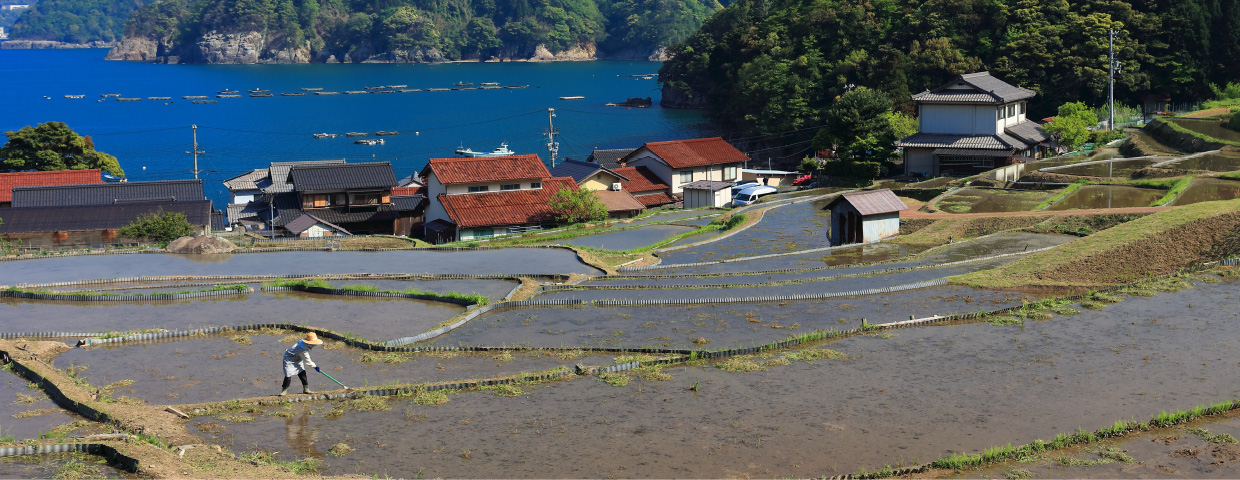






 Refine Search
Refine Search

